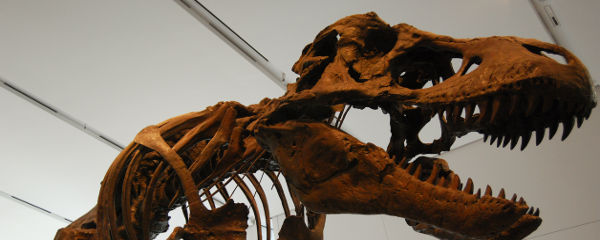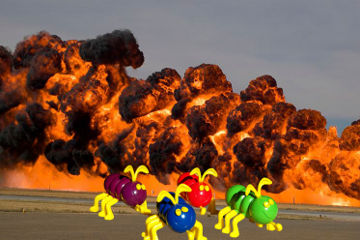What I’ve Learned:
“Yersinia pestis: A plague on pretty much ALL the houses, really.”
Science has helped us to cure a few infectious diseases over the years, like smallpox and polio — and measles, if you live far enough away from Jenny McCarthy. But many dangerous diseases remain, and threaten us all in one way or another. Influenza, for instance. Tuberculosis. Adam Sandler movies.
Also on that list is a name you may not recognize, but which has terrorized the earth for thousands — and humans for hundreds — of years: Yersinia pestis.
That may sound like the name of a Bond villain’s girlfriend, or that animated Disney lady with a grudge against spotted dogs. But it’s actually worse. Much worse.
Yersinia pestis is a species of bacteria, and the disease it causes has been called many things through the centuries. The Plague of Justinian in the 6th century AD. The Black Death in late Middle Ages Europe. Then the Great Plague of Seville, the Great Plague of London, the Russian Plague of 1770-72 and the worldwide Third Pandemic, among many others. At any time, the name changes based on where in the body Yersinia pestis makes its home: pneumonic plague in the lungs, septicemic plague in the blood and bubonic plague in lymph nodes.
Today, we just call it “plague”. Maybe we got lazy with the naming in modern times. I blame Twitter.
No one knew exactly what caused all of these outbreaks until 1894, when Pasteur Institute scientist Alexandre Yersin discovered the culprit bacterium during a plague epidemic in Hong Kong. The species was later named after him; that’s where the Yersinia comes from.
(If the pestis part comes from being a “pest”, that seems like a colossal understatement by whomever is naming these things. A housefly is a pest. Rob Schneider is a pest [who apparently lives too close to Jenny McCarthy]. Yersinia pestis has killed tens of millions of people and once wiped out a third of the European population.
It seems like that rates at least a “Yersinia bothersomeis“. I’m just saying.)
As a bothersome-at-least pathogen, Yersinia pestis has been the subject of much study by modern scientists. Genomes of two of the three known subspecies have been fully sequences, and the genes making these bacteria more virulent than closely-related Yersinia species are well understood. The cycles of infection have been studied, as well — from the fleas harboring bacteria that spread the disease among animals via bites, to rodents like rats and prairie dogs that serve as “reservoir hosts” maintaining bacterial populations, to humans — where Yersinia pestis really gets nasty.
In people, the bacteria survive by following the “best defense is a good offense” strategy. Rather than hiding from our immune system cells, Yersinia pestis meets them head-on. It invades white blood cells, and suppresses the body’s ability to mount an immune response. The bacteria can also kill certain immune cells by injecting proteins directly inside that form pores in the outer membrane, so the insides leak out. Even at a subcellular level, Yersinia pestis plagues are horror movie-level gruesome.
As a final insult, the bacteria often set up shop right in lymph nodes, centers of immune system function. You’d think it was enough to spread all over your body and possibly kill you, but no — Yersinia pestis also wants to rub it in your face.
Luckily, modern science also has a fairly good handle on how to treat the plague. Caught early enough, Yersinia pestis infections respond to antibiotics, and research is ongoing using specific bacterial proteins to make a preventative vaccine.
Still, we’re unlikely to wipe Yersinia pestis completely off the map any time soon. Cases are still reported occasionally today, and recent DNA sequencing performed on material from a 20 million year old fossil flea turned up Miocene Era Yersinia pestis sequence. It seems the world has suffered this “pest” for many, many years and probably will for many, many more to come.
Just like Adam Sandler movies. Sigh.





